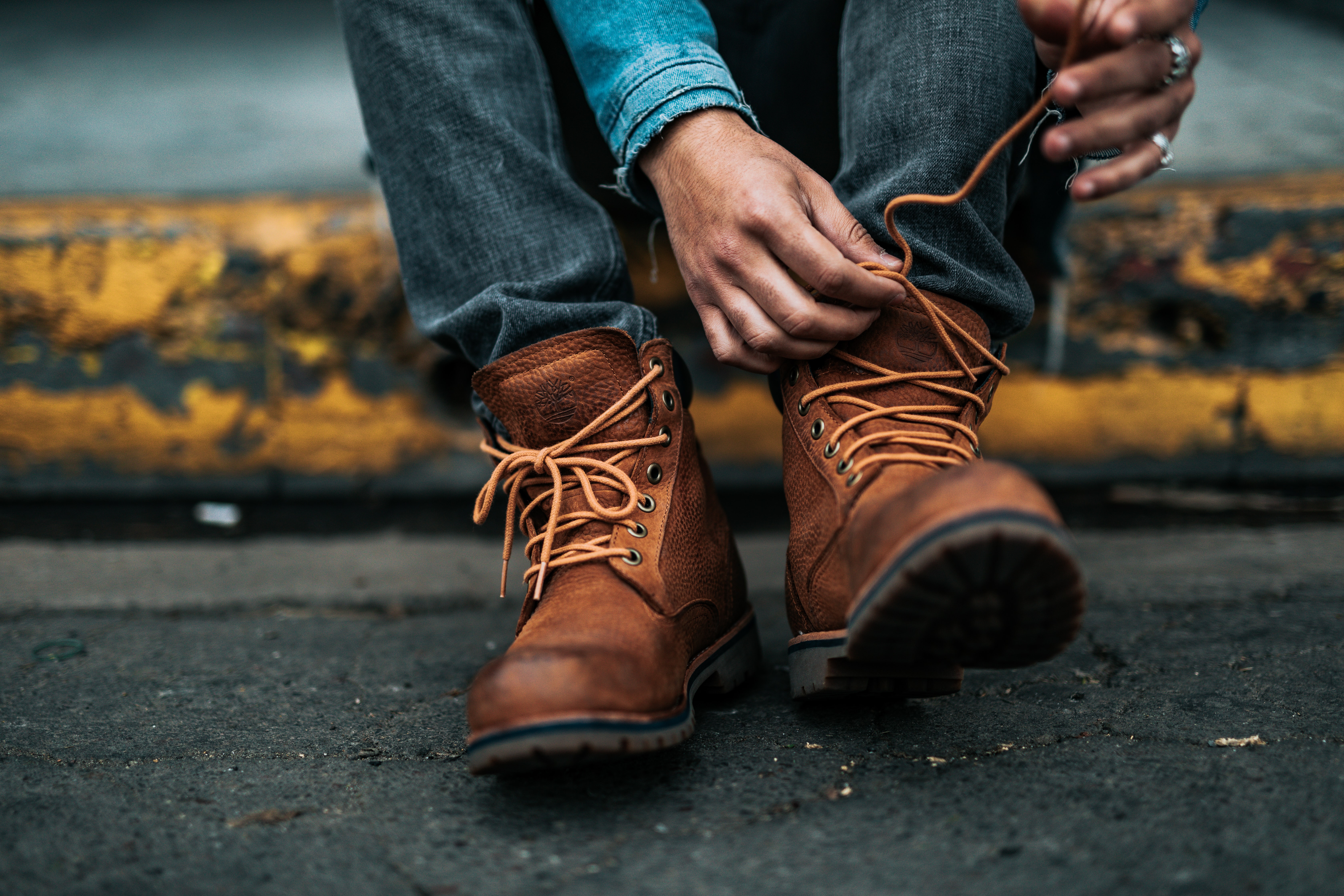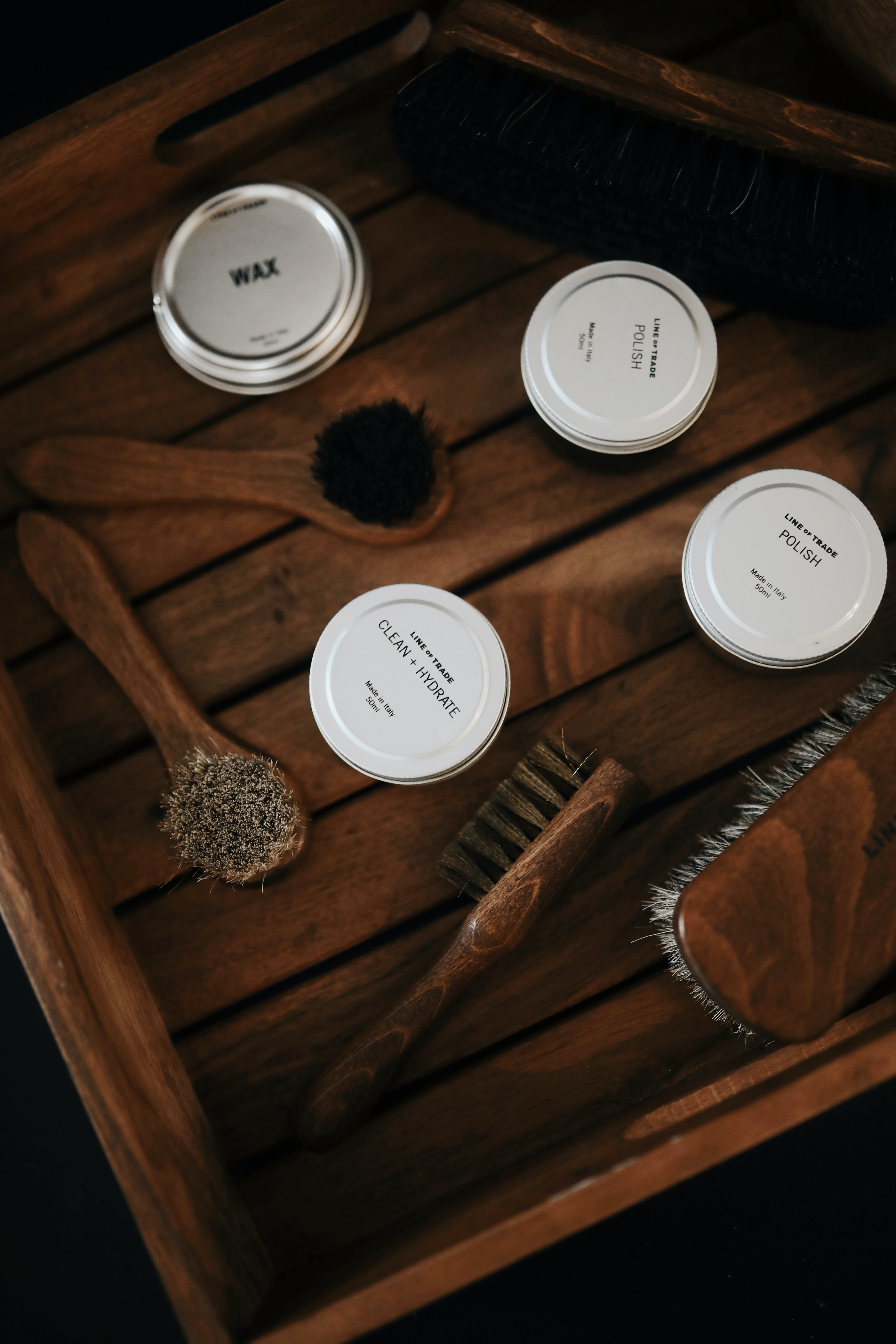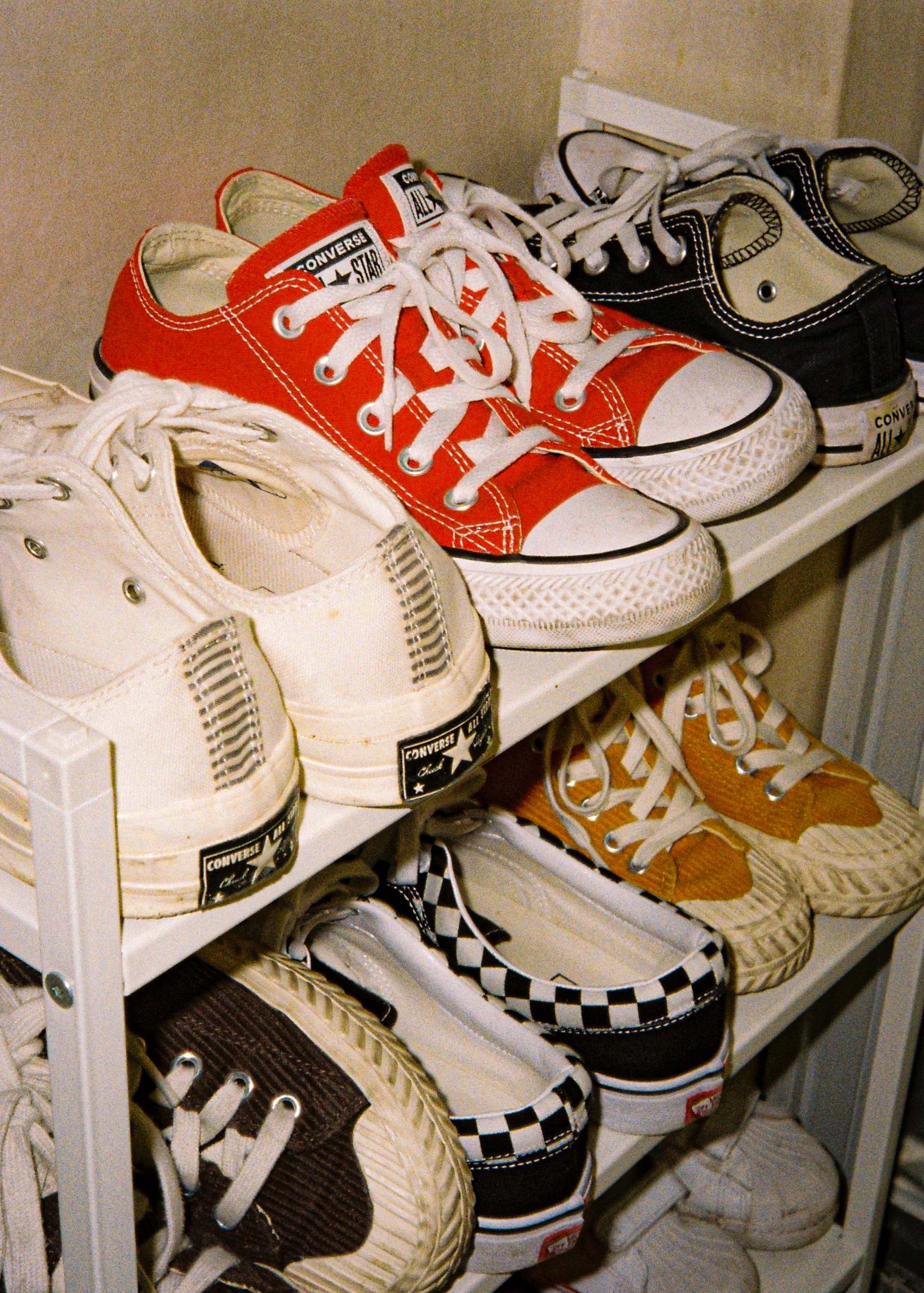Boot Camp: helpful tips to care for your shoes
9417 0
This year, Tearfund turned up the heat on the footwear industry, exposing the exploitation and environmental concerns linked to our shoes in our article "Footwear: An Industry Laced with Exploitation". One way we can respond and tread lighter for people and the planet is by extending the life of our shoes. This guide will tell you everything you need to know to ensure your shoes live long and happy lives.
Here are six actions that can extend the life of our shoes:
#1. Take a gentle approach to putting them on and taking them off
Using a shoehorn, pulling on the tabs, or even using your thumb when sliding your heel into your shoes is a basic step we can take to extend their lives, particularly because the back of the shoe often wears first. It sounds simple, but many of us are guilty of using our other foot to slide our shoes off or resorting to turning our sneakers into slides to quickly take out the rubbish. Taking the time to undo your laces or buckles makes sure the ankle area of your shoes does not stretch prematurely.

#2. Dry shoes properly between wearing if they get wet
One of the best things we can do is rest our shoes. Adopting the one-day on, one-day off approach can significantly extend the life of our shoes, keeping them fresher and remaining sturdy. This is particularly true when it comes to leather, which needs time to dry properly from our feet’s natural perspiration. The head cobbler at Oliver Sweeney reports that this rotated approach can make our shoes “probably last four times as long as a pair worn every day”. Ensuring we’re wearing the right shoes for the weather is another great practice for extending the life of our shoes. When shoes get wet, it’s important to dry them properly. To dry shoes, take the laces and insoles out, stuff them with newspaper and place them somewhere warm and dry but away from direct heat. Avoid putting shoes in the dryer, as heavier shoes can damage the machine, and softer shoes can shrink a size or two.
#3. Keep them clean
One important action we can take to extend the life of our shoes is to keep them clean. Leaving dirt and dust on them for extended periods can stain and dry the material, making our shoes look old faster.
Times your shoes might need some TLC:
- - Grass stains on white sneakers—try using a form of rubbing alcohol, vinegar, or leather cleaner. Test the cleaner on a less noticeable patch of the shoe first.
- - White bloom on gumboots—try rubbing a teaspoon of olive oil over them, or using a rubber conditioner.
- - Mouldy shoes—brush off the spores outside with a gentle brush, but ensure you wear gloves and a mask! Then wash and dry the shoes thoroughly. Wipe the shoe with a solution of equal parts rubbing alcohol and water before drying them with a cloth. Ensure you thoroughly clean and dry the storage area around the shoes to prevent any future mould, whether they are in a wardrobe, bag, or box!

#4. Tailor your care routine for specific materials
Not all materials are treated the same. Specific materials can require different care practices, even when they are part of the same shoe. As always, it’s best to check the brand's care instructions. To get you started, the table below has some general guidelines for caring for and cleaning different types of material.
|
Material Type
|
Recommended Care Practices
|
|
Leather
|
Leather stains easily, so it’s important to keep shoes clean. Shoemakers recommend using a leather cleaner on shoes and avoiding getting leather unnecessarily wet even in the cleaning process. Use a leather shoe conditioner every 2 – 3 months to stop the material from drying out and cracking, and use leather shoe polish to remove scuffs.
|
|
Suede
|
Avoid wearing suede shoes on wet days. To clean them, shoemakers recommend using a special suede brush and brushing in the same direction as the grain.
|
|
Rubber
|
Rinse off mud, dirt, and sand after every wear. For a more thorough clean, use dishwashing liquid, warm water and a cloth, and dry with a towel.
|
|
Wool
|
As the fabric is more delicate, milder soaps or detergents are recommended for cleaning wool shoes. If spot cleaning, ensure you dab the cloth in the same direction as the knit. Some woollen sneakers can be machine-washed like Allbirds’ Wool Runners, but they should be placed in a wash bag on a delicate cycle with cold water. Allow them to air dry properly.
|
|
Synthetic
|
Use warm water and mild laundry detergent to wipe clean the dirty area.
|
|
Canvas
|
Use laundry detergent to clean canvas shoes. Some canvas shoes can be machine-washed in a wash bag on a delicate cold-water cycle.
|
|
Cork
|
Use a dry cloth to get rid of any dirt or dried mud. Then with a damp cloth, use gentle, circular motions to clean them (no soap or polish).
|
|
Plant-based Leather
|
For Piñatex and several other plant-based leathers, wipe the surface with a damp cloth and mild soap to clean them. Some plant-based leathers also recommend using wax for maintenance.
|
|
Mesh
|
Use a dry brush to remove any loose dirt. Soak the dirty spot of the shoe in a mixture of mild laundry detergent and water for around 15 minutes before gently scrubbing.
|
#5. Store them properly
Use shoe trees or newspaper (changed semi-regularly) to maintain the shape of your shoes and avoid further creasing when storing them.
It’s best to store shoes in a place that allows air to flow around them. Shelves are often good storage places. If you are storing them for longer, shoe bags or canvas totes can help prevent dust while maintaining airflow.

#6. Repair them
When it comes to giving our shoes more life, repairing them is one of the best things we can do. Repairs can include strong glue to reattach a strap or sole, a professional replacing the sole or zip, or patching leather tears. The general rule when deciding to get shoes repaired is that earlier is best. By waiting too long, we can often lose the window for repair.
The most sustainable shoe collections are the ones we already own. These six actions can help us to make these collections last longer and reduce the need to buy new shoes so frequently. If you are looking for more direction for how to practice good stewardship, we are encouraging people to live by the Five R’s: Reduce, Re-wear, Repair, Re-Home, and Raise Your Voice.
Haven’t read the article yet? Check out “Footwear: An Industry Laced with Exploitation”, our in-depth exposé into the footwear industry.
Read Article